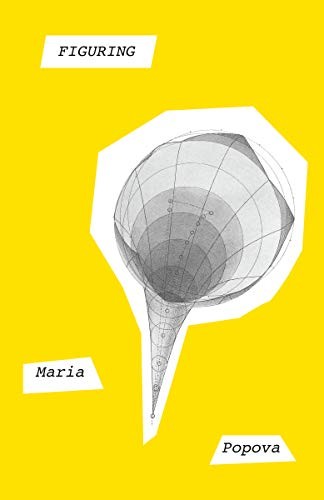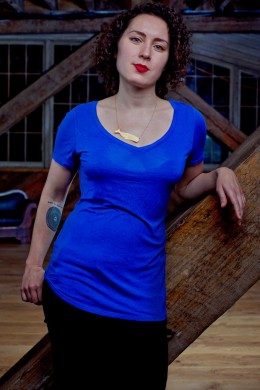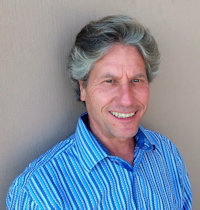Figuring

In her own words...
I have composed a book. It only took twelve years of Brain Pickings and the most beautiful, difficult, disorienting experience of my personal life.
Figuring explores the complexities, varieties, and contradictions of love, and the human search for truth, meaning, and transcendence, through the interwoven lives of several historical figures across four centuries — beginning with the astronomer Johannes Kepler, who discovered the laws of planetary motion, and ending with the marine biologist and author Rachel Carson, who catalyzed the environmental movement. Stretching between these figures is a cast of artists, writers, and scientists — mostly women, mostly queer — whose public contribution has risen out of their unclassifiable and often heartbreaking private relationships to change the way we understand, experience, and appreciate the universe. Among them are the astronomer Maria Mitchell, who paved the way for women in science; the sculptor Harriet Hosmer, who did the same in art; the journalist and literary critic Margaret Fuller, who sparked the feminist movement; and the poet Emily Dickinson.
Emanating from these lives are larger questions about the measure of a good life and what it means to leave a lasting mark of betterment on an imperfect world: Are achievement and acclaim enough for happiness? Is genius? Is love? Weaving through the narrative is a set of peripheral figures — Ralph Waldo Emerson, Charles Darwin, Elizabeth Barrett Browning, Herman Melville, Frederick Douglass, Caroline Herschel, Nathaniel Hawthorne, Walt Whitman — and a tapestry of themes spanning music, feminism, the history of science, the rise and decline of religion, and how the intersection of astronomy, poetry, and Transcendentalist philosophy fomented the environmental movement.
Long ago, a kindly interviewer asked me why I routinely declined offers for the types of easy, marketable books I am frequently approached about doing. I told him (please suspend judgment: I was in my twenties) that I had no interest in putting into the world a book that has the shelf life of a banana. I hope Figuring has the shelf life of a shelf.
https://www.amazon.com/Figuring-Maria-Popova-ebook/dp/B07D6BPV9B
Author: Maria Popova

Maria Popova ( born 28 July 1984) is a Bulgarian-born, American-based writer of literary and arts commentary and cultural criticism that has found wide appeal (as of 2014, 3 million page views and more than 7 million monthly readers), both for its writing and for the visual stylistics that accompany it. She is most widely known for her blog, Brain Pickings, an online publication that she has fought to maintain advertisement-free, which features her writing on books, and ideas from the arts, philosophy, culture, and other subjects. In addition to her writing and related speaking engagements, she has served as an MIT Futures of Entertainment Fellow, as the editorial director at the higher education social network Lore and has written for The Atlantic, Wired UK, and other publications. As of 2012, she resided in Brooklyn, New York.
Reviewed by: John Stokdijk

In 2006 Maria Popova launched her blog, Brain Pickings. I stumbled upon it sometime around 2010. I have been reading and enjoying her posts from time to time ever since.
Popova announced the publication of her book Figuring in 2019 and I immediately knew it was a book I wanted to read. But with many books on my wish list, I never got around to it. I was delighted when it became the Ajijic Book Club selection for September, 2021, giving me the little nudge I needed.
To fully appreciate Figuring, it helps to know some things about Maria Popova. Clearly, she loves mathematics and has numerous blog posts about the subject. I think that explains the title of her book, but the word as she uses it probably has multiple meanings. Popova is an atheist, but not an aggressive militant atheist. Popova is a feminist, but not an activist. Popova sometimes suffers from depression, but she does not victimize herself. Popova is a lesbian, but not caught up in the current wave of extreme views on gender and sexual orientation. And, in my opinion, Popova is both very intelligent and very wise, but not arrogant.
How Maria Popova lives her life, and how she tells the stories of others in her book, is a very effective way to advance the ideas she believes in. She writes beautiful stories about beautiful people who happen to live lifestyles unacceptable to most people at the time they lived. Figuring is a book of beautiful love stories, forbidden love, and lives mostly well lived.
Chapter 1 of Figuring is the story of Johannes Kepler in 1617. Today it is common knowledge that the earth revolves around the sun and that the earth turns on its axis. I cannot imagine what it would be like to know this, to know this with certainty, at a time when almost no one believed this, when it was a heresy punishable by death. Popova tells the story with drama as Kepler struggles to save the life of his mother.
I knew nothing of Maria Mitchell, Margaret Fuller or Harriet Homer. I enjoyed the stories, and the love stories, of these remarkable women living in the USA in the 19th century. They were pioneers of first-wave feminism. That was a very different time, a very different world.
No woman can vote. No woman can receive a formal education in higher mathematics or astronomy anywhere in the world. No woman has yet been hired by the United States government for any technical job.
Maria Popova neither hides nor flaunts the details of her own life which she states as simple facts, thus normalizing once forbidden behavior.
Nobody knows what goes on between two hearts—including, more often than not, the people in whose chests they beat. But my own sense—based on years of immersion in Mitchell’s world and in the complex universe of other same-sex relationships between her contemporaries, and on an awareness of how puritanical conceits constrict natural human sexuality—is that Ida may have been the love of Maria’s life.
Some feminist pioneers were not intimidated by the rules of society.
Charlotte Cushman… was the most prominent American actress of her time. In the year of photography’s birth, at age twenty-three, she had stunned the theatrical public by appearing as Romeo alongside her sister, who played Juliet. She was also—and this is a crude anachronistic application of a modern term, for there is no historical analog—an out lesbian. By the time Hosmer was introduced to her by a former Sedgwick School classmate, Cushman was traveling with her longtime partner, the British journalist Matilda Hays. Their union was so public and accepted that the two women appear in a traditional couple arrangement in one of Southworth & Hawes’s most famous daguerreotypes—Cushman sitting, Hays standing behind her, both dressed in fitted male attire above the waist and flowing skirts below.
Others could not bear to live in the USA.
Harriet Hosmer was determined to live the public life of the artist, not the domestic life of the wife. There was no place for her in America—she was now a cultural refugee, blissfully encamped in the subcultural mecca of Rome’s queer artists.
About half way through the book, in Chapter 17, begins the story of a name I recognize, Emily Dickinson. It brings back memories, unpleasant memories. One of my least favorite subjects in high school was English Literature. As a teenager I did not understand why I was so frustrated by those classes, but now I know. I did not mind the essays and the short stories. But I hated poetry. I did not understand poetry then and I do not understand poetry today. None of my teachers understood me and none helped me cope emotionally. I was forced, along with every other student, to read Shakespeare out loud in class. I dreaded that. I am sure that I had the poetry of Emily Dickinson shoved down my throat.
But I greatly enjoyed the prose of Maria Popova telling the story of Emily Dickinson, a strange and intriguing woman. As a high school student in rural Nova Scotia in the 1960s, I do not remember being told anything about her life, only her poetry. No doubt it would have been unacceptable at that time to tell us anything about the relationship between Emily Dickinson and Susan Gilbert. That would have gotten my attention. That I would have remembered.
And it would have been unacceptable to teach us that Emily Dickinson was in a group of “no-hopers” because they would not proclaim that they would serve the Lord. Today I am inspired to learn that Emily Dickinson did not fear punishment from God for her desire for Susan.
What I got barely deserves the label education. Imagine an education where the poetry of Emily Dickinson is used to teach youth about a healthy relationship with death. But my parents, and most parents at that time, would not have tolerated the slightest hint at such things.
I can now appreciate why people love poetry and I have learned to appreciate the mind of a poet. Maria Popova, and others, have taught me valuable lessons about poetry. However, I would much rather read about poetry than read poetry.
The poet turned not to formulae but to the forms of verse in wresting from nature spiritual hymns—or elegies, which comprise the bulk of her work. The elegiac form, with its dual purpose of celebration and lamentation, gave Dickinson the perfect container for how she experienced life itself—and certainly for how she experienced love, with its parallel promise of exaltation and annihilation, its tonic and its tribulation.
This dread of a permanent parting—by death, by distancing, by abandonment—seems to be the single most powerful animating force of Dickinson’s poetry.
Unlike the prose of letters, pinned to the physical and emotional reality of the present, in poetry the imagination is allowed to travel between fact and fantasy, to traverse present, past, and future, so that the reader, and perhaps even the writer, is never quite sure—nor need ever ask—to what extent the images evoked correspond to the intersection of matter and moment we call reality.
In the years following her “terror,” Dickinson penned hundreds of forceful poems—verses of unambiguous beauty that thrill and taunt with their ambiguous meaning. Writing at an almost manic pace, she seems to have found in poetry’s generous allowance for symbolism and vagueness the one outlet for confiding, comprehending, and containing an experience of uncontainable emotional magnitude.
...yet speculation has woven the whole of the Dickinson legend. Any narrative thread, followed long enough, grows frayed by conflicting claims several degrees removed from the loom of fact, tattered by the personal agendas of those who made the claims and those who repeated them half-verified, half-comprehended. And what is fact, anyway, in the life of a woman of such tessellated truth? Even her handwriting—that most intimate script of personhood—underwent three dramatic transfigurations over the course of her lifetime:
Chapter 23, about Rachel Carson, author of Silent Spring which was published in 1962, marks a significant transition in my reading experience of Figuring. I was now reading about events during times I lived in. There is something different about reading history before my birth and reading history after my birth.
I remember experiencing our own silent spring on our farm in Nova Scotia. My father grew cabbage, big fields of cabbage. He protected his crop from the harmful pest, the cabbage butterfly caterpillar, with DDT. I remember my father often walking in a cloud of DDT dust.
It was my older brother, Bill, who first noticed the absence of birds. I do not remember my father’s reaction to this observation. But soon thereafter DDT was banned and my father stopped growing cabbage.
I do not remember when I first became aware of Silent Spring, probably during my mid-teens. In the 1960s I was quite aware of growing concerns about pollution causing significant damage to the environment. I know that the work of Rachel Carson made a big difference. Unfortunately, in my opinion, all things considered, her efforts were not enough. The risk of ecological collapse is greater today than it was fifty years ago.
According to Wikipedia, the nature of the relationship between Rachel Carson and Dorothy Freeman is controversial, and Popova describes it beautifully.
Theirs was the kind of “craziness” that comes from veering from the convention-paved path into that liminal Uranian space where love exists beyond category, beyond the cultural and biological imperative, beyond what even the most precise and poetic language can hold.
I have lived through the second-wave feminism of the 1960s and 1970s and the third-wave feminism of the 1990s. Currently we are in the fourth wave of feminism and some aspects of it are problematic. Today there is a culture war at the extremes of gender and sexual orientation issues, well outside the parameters of healthy feminism and healthy masculinism.
I am hoping for and waiting for what I call next-wave feminism, final wave feminism. Maria Popova personifies the ideal, in my opinion. She has not been drawn into the cultural wars. I am not surprised as it seems to me that she has wisdom, insights which are uncommon. And like her other attributes, her wisdom is understated and easy to miss in Figuring.
The wisdom of Maria Popova in Figuring
What is love, after all, if not an affectionate acceptance of the lover’s full spectrum of being, the silly along with the solemn?
The stories we tell about our own lives, to others but especially to ourselves, we tell in order to make our lives livable.
An outsider to the temporal and psychic reality of the person has reached across time to grab a fistful of selective surviving fragments—diaries and letters, themselves already warped by the self-selection of recording—to reconstruct from them a whole existence. It is difficult to do. Often, it cannot be done.
Having long ago competed in bodybuilding myself, I am not oblivious to how this particular sport can become a sandbox for working out confused sexuality, separating spirit and sinew to turn the body into a means of both subverting and submitting to the ideals of femininity and masculinity.
There is a singular strangeness to those moments when we find ourselves unmoored from our own being, when something seems to pull us beyond ourselves and shock us into the recognition, however momentary, that the self is not the static monolith we take it to be but something dynamic and situationally sculpted into various possibilities of being.
It is, however, both unreasonable and ungenerous not to recognize that human motives come in multitudes, as reticulated and contradictory as our selves.
...a deep intuition about the hardest fact of science: In a few billion years, when our star burns itself out “by and by,” it will bend time itself as this pale blue dot is revoked into an eternal stillness of nonbeing—the world will end in an endless total solar eclipse.
